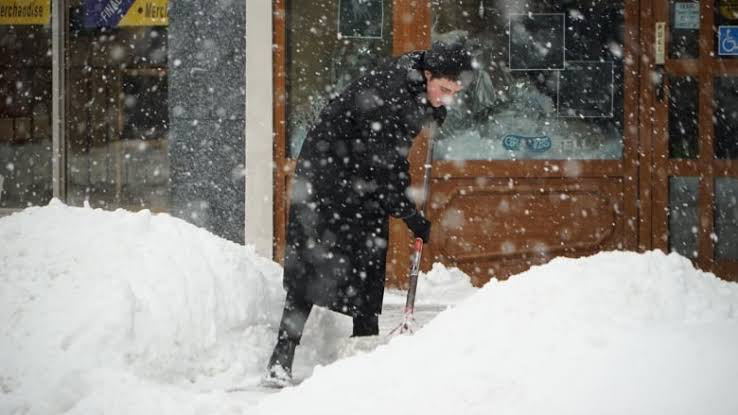A massive winter storm swept across the U.S. East Coast from Florida to Maine on Wednesday, leaving more than half a million homes and businesses without power. The storm brought heavy snow, ice, and strong winds that toppled trees and power lines, disrupting travel and causing widespread damage.
New York was the hardest hit state, with nearly 143,000 customers out, followed by Pennsylvania with about 105,000 outages, North Carolina with about 70,000 outages, and New Jersey with about 58,000 outages, according to data from PowerOutage.us.
The storm also affected parts of Virginia, Maryland, Delaware, Connecticut, Massachusetts, New Hampshire, and Maine, where some areas received more than a foot of snow.
The National Weather Service issued winter storm warnings and advisories for much of the region, warning of hazardous conditions and possible power outages. Some schools and government offices were closed or delayed, and hundreds of flights were canceled or delayed at major airports.
A Test for the Energy Sector
The storm came ahead of what will likely be the nation’s coldest weather since December 2022, according to data from financial firm LSEG. Extreme weather events in recent years have challenged the power grid, and the forecasted low temperatures could add further strain to it.
In February 2021, a historic freeze left millions in Texas and other U.S. central states without power, water, and heat for days, exposing the vulnerability of the electric system to extreme cold. In December 2022, another winter storm, known as Elliott in the energy industry, almost caused the collapse of power and natural gas systems in parts of the eastern half of the country, forcing some utilities to impose rotating outages to maintain electric reliability.
The storm also affected the natural gas market, as production declined due to the freezing of gas wells, pipes, and other equipment, while demand for gas for heating and power generation soared, dramatically lowering line pressures.
The latest storm is a reminder of the need for more investment and innovation in the energy sector, as climate change increases the frequency and intensity of extreme weather events. Experts have called for more grid resilience, energy efficiency, renewable energy, energy storage, microgrids, and distributed generation to cope with the changing conditions.
Despite the challenges posed by the storm, some see it as an opportunity to accelerate the transition to a cleaner and more sustainable energy future. Nuclear fusion, often touted as the ‘holy grail’ of energy, could offer a solution to the world’s energy needs, as it produces no greenhouse gas emissions, no radioactive waste, and virtually unlimited fuel.
On Wednesday, scientists at Korea Superconducting Tokamak Advanced Research (KSTAR) announced that they had achieved a breakthrough in nuclear fusion, sustaining a reaction for 30 seconds at temperatures exceeding 100 million°C – nearly seven times hotter than the core of the sun. This is a significant milestone for the field of nuclear fusion, as it represents both the necessary heat and stability required for viable fusion reactors.
KSTAR’s experiment is a promising step towards leveraging nuclear fusion to power a sustainable, clean-energy future, as the world faces the twin challenges of climate change and energy security.
Source: Reuters



